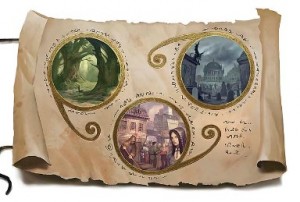
![]() Every encounter should advance the plot.
Every encounter should advance the plot.
You see this tip a lot in blogs, or on Twitter, and guess what? It’s wrong.
Think of your favorite stories, in any medium. Think of your favorite miniseries or novel series. Aren’t there always stories within stories? Perhaps even some loose ends you’re dying to learn about? Asides, flashbacks, a break from the “main plot” – they’re everywhere, and they enrich the characters and make the world more believable and rich.
A brief “special guest star” or “side trek” is OKAY. Really! More than one, even!
See, these “random” encounters help fight predictability, the bane of all stories and RPG’s. They color the world and make you wonder that much more about its mysteries. They help you learn more about characters’ past mistakes or triumphs, and learn one more reason why they act the way they do in their (fictional) lives.
But that’s not so fictional, is it? This is real life. Not everything we do or know moves our plot forward every second of every day. No. There are subplots, there are plenty of diversions, and there are plenty of other joys and dreams, accidents and nightmares we seek, stumble onto, or avoid like the plague.
Living is like that, even for fictional characters. In a format like a table-top RPG, remember you’re refreshingly free to take as much creative license as you wish exploring any combination of story or character roots, trunks and splinters. Or even just a few leaves blowing in the wind.
Want more? See The New Random Encounter and True Encounter Difficulty: Challenge Your Players.
Remember to cast your vote on my new poll: how much time you believe a typical D&D combat should last?
What are some of your favorites stories – in any art form or medium – where seemingly random sidestories or minor characters stole your imagination? Share them below.